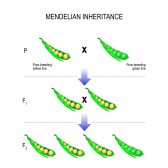Definition
noun, plural: stratified squamous epithelia
A type of stratified epithelium in which the topmost layer is made up of squamous epithelial cells, such as that one found in the outermost layer of the skin and the linings of esophagus, mouth, and vagina
Supplement
A stratified epithelium is an epithelial tissue composed of more than one layer of epithelial cells. It differs from a simple epithelium in a way that the latter consists only one layer of epithelial cells. The basal layer of the stratified epithelium is the only one that is in contact with the basal lamina. The cells in the basal layer divide mitotically resulting in more cells atop the basal layer. The apical cells are regularly replaced by new cells produced through mitosis. The stratified epithelium may be further classified based on the type of cells particularly at the surface: squamous, columnar, or cuboidal.
A stratified squamous epithelium is a stratified epithelium in which the topmost layer is made up of squamous (flattened and scale-like) epithelial cells. The deeper layers may have cuboidal or columnar cells. Some stratified squamous epithelia are heavily keratinized whereas others are slightly or non-keratinized. The keratin is produced by highly specialized type of epithelial cells called keratinocytes. In heavily keratinized epithelium, the keratin filaments become progressively more abundant toward the surface, which on the dry surfaces of the body may consist of a layer of dead corneocytes. Examples of keratinized squamous epithelial tissues include the epidermis of the palm of the hand, the sole of the foot, and the masticatory mucosa. Stratified squamous epithelial surfaces that are slightly (or non-) keratinized are exemplified by the linings of mucosa of the oral cavity, anal canal, ectocervix, foreskin, etc.
This tissue is primarily involved in providing protection against abrasion.
Also called:
- stratified squamous epithelial tissue
See also:







